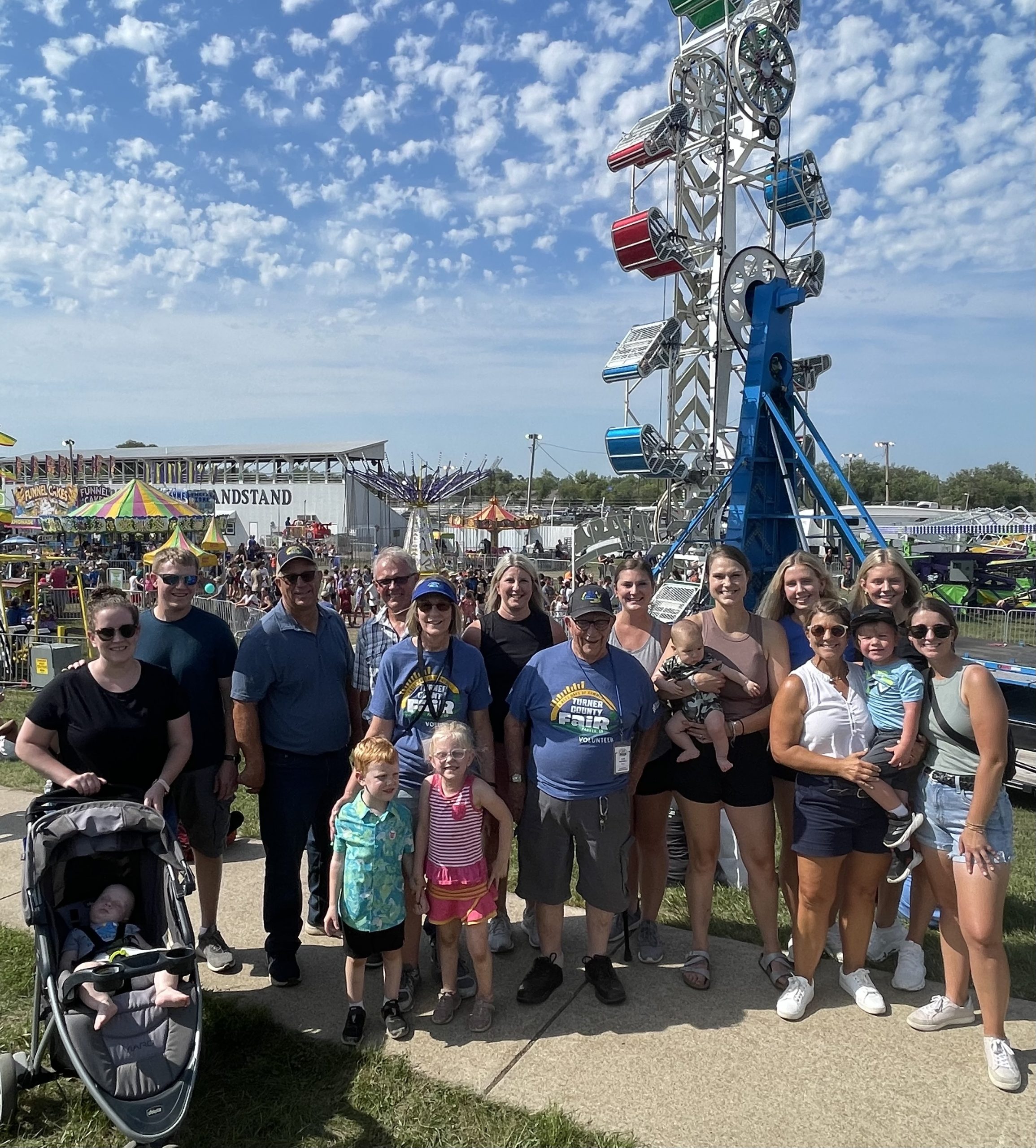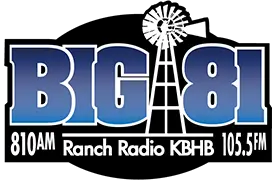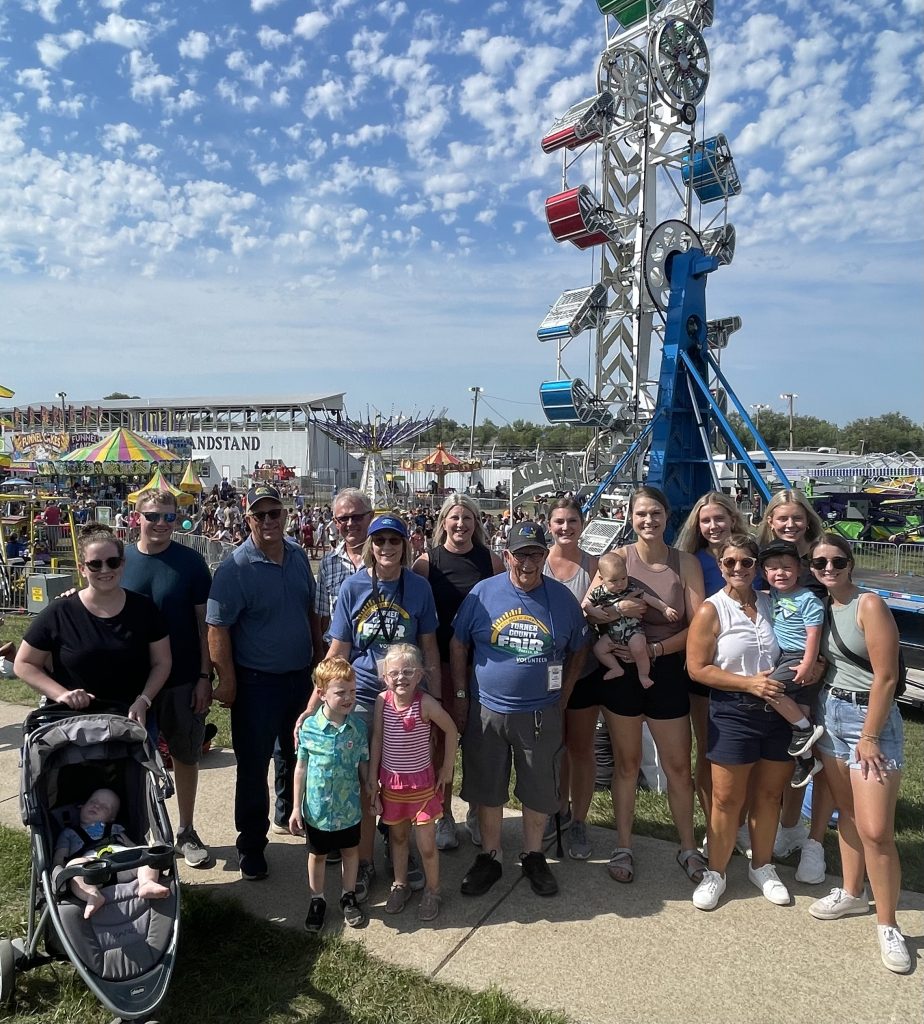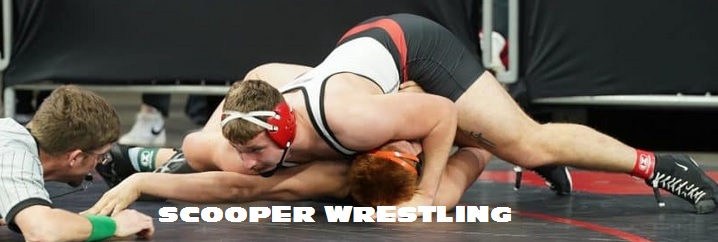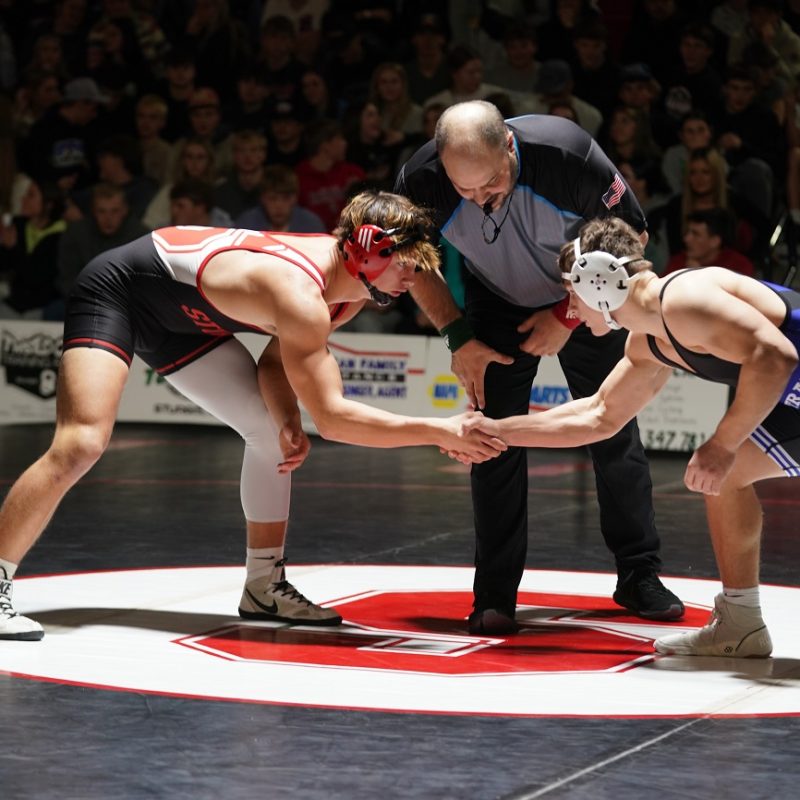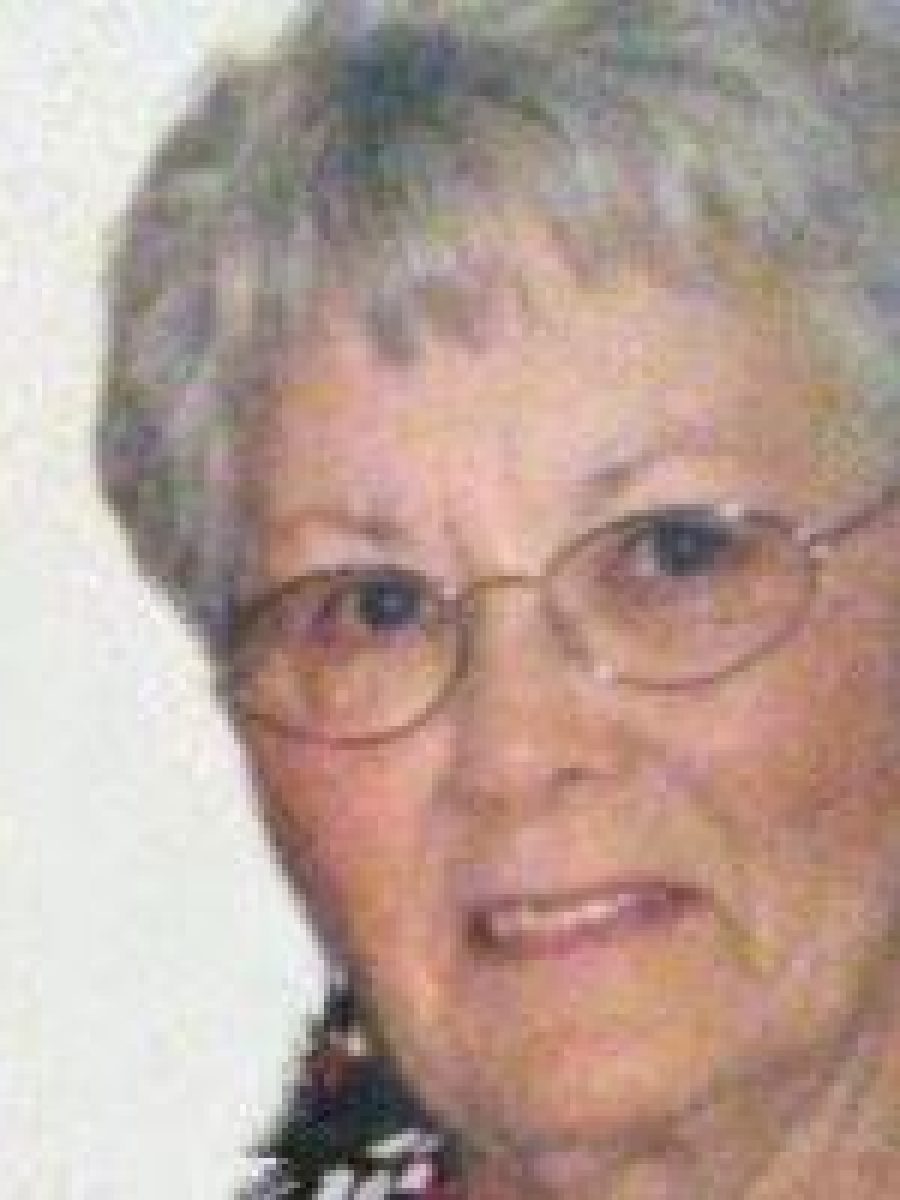PARKER, S.D. – Bob Merrill just couldn’t help himself. Despite bad ankles that require the use of a walking stick, the 84-year-old dairy farmer recently hobbled into an exhibit hall at the Turner County Fair as part of his daily rounds.
The first person he ran into was Gloria Preheim, a fair volunteer since 1979. She offered an update on the pie contest that took place the previous day, a tradition she started that has grown to include more than 200 of the confections auctioned to raise money for the local food pantry.
“It was my crazy idea to start with,” she said, describing the crowds that gathered to appraise and sample pies. “I need to find a way to get out of doing that next year!”
Her words rang familiar to Merrill, whose connection to the nearly 150-year-old Turner County Fair – which concluded Aug. 17 – is so ingrained in his family’s rural heritage that separating the two would be impossible, even if he wished to do so.
This year marked Merrill’s final official involvement with the event where he started showing livestock as a boy in the 1950s. His late wife, Joyce, managed the food stand for 32 years and was a charter member of the South Dakota 4-H Hall of Fame.
Known to locals as “the best four days of summer,” the fair tradition has been embraced by the Merrills’ four adult children, 10 grandchildren and six great-grandchildren, who occasionally cajole Bob into a ride on his golf cart.
Bob started on the fair board in 1978 and later served as manager for 21 years. He stepped back to assistant manager in 2016. It’s a role he’ll now relinquish as organizers plot the future of South Dakota’s longest-running fair, an agricultural salute with carnival rides and grandstand auto shows that draws as many as 80,000 visitors annually.
“When people ask me if I’m involved with the fair, I tell them I have the wrong last name to say that I’m not,” said Merrill’s son, Allen, 61, who runs the family farm just south of Parker’s city limits. “It will be interesting to see what next year looks like, but we basically said, ‘Dad, there’s a time to let other people get involved and make decisions.’
“Our fair is supported and worked by locals,” Allen added. “But it’s people from Sioux Falls and all around the area who attend. They love coming here, and we love to have them.”
As counties struggle, Parker tradition lives on
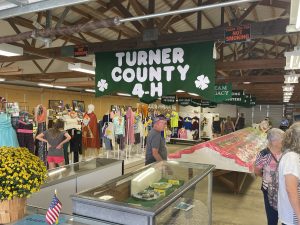
County fairs held in small-town settings across South Dakota each summer come with a caveat. Many counties are struggling to find enough revenue to pay for public safety, sanitation, water systems and other services they’re required to provide.
A summer legislative study has explored possible solutions, including consolidation of services among smaller counties and enhanced revenue streams, such as allowing counties to charge sales tax.
Turner County’s proximity to fast-growing Lincoln and Minnehaha counties has helped it avoid the population decline seen in many rural sectors. Turner saw a 2.2% population increase from 2020 to 2022 and now sits at 8,856 residents, with Parker joined by communities such as Marion, Viborg, Centerville and Hurley.
Parker, the county seat, has a population of more than 1,200, with a growing school district that recently added a new elementary school. The high school will also be expanded with a new career and technical education (CTE) facility and auxiliary gym after voters passed a $4 million bond issue in November 2022.
This civic momentum extends to the Turner County Fair, which started in 1880 and settled into its current site in 1941 with help from the Works Progress Administration. From 2018-21, county officials devoted an average of $58,000 in general funds annually to support the fair, with part-time salaries paid to a fair manager and secretary.
Free admission, no alcohol served at Turner County Fair
The event relies on hundreds of volunteers, from fair board members to the church groups that help run the ice cream and food stands. Admission charged for grandstand events generates about $20,000 a year. In the winter, the Turner County Fair Board rents out buildings for events and storage to bring in more money.
Board president Darcy Anderson said net revenue each year is put back into improving the fairgrounds, such as reinforcing the barrier between the bleachers and the racetrack and building a new fair office, which is scheduled to be ready for 2024.
Financial support from the county allows organizers to continue free admission to the fair and no alcohol on the grounds, eschewing the beer gardens that many fairs use to boost revenue.
“Not serving alcohol helps draw in families and prevent some of the headaches associated with people having too much to drink,” said Anderson, who has been on the fair board for about a decade. “There are still some lovely establishments up on Main Street, but if people get too rowdy, then we have a conversation with them.”
South Dakota State Fair Continues To Lose Money Amid Cost Overruns, Management Concerns 〉
The heart and soul of county fairs are 4-H and Future Farmers of America (FFA) organizations that provide animals and youth participants for exhibits and competitions.
On Aug. 16 at the Turner County Fair, 11-year-old Weston Grace and his 8-year-old brother, Xavier, hosed down a beef cow with soap and water outside an exhibit hall to get it ready to show.
“It’s a good way to make friends,” said Weston of his 4-H involvement.
Allen Merrill, whose various fair duties include announcing at livestock shows, said that 4-H participation numbers had “softened” as many rural counties see population declines. He added that there have been conversations about counties consolidating presentations in the future.
“We know it’s a changing world, but 4-H is still a huge part of the fair and always will be,” said Allen, who serves as chairman of the Midwest Dairy Association and runs an operation that milks 200 cows per day.
“We don’t have as many small farms or farmers, so that’s a huge difference. Things are transitioning and we need to figure out what that looks like.”
Like much of today’s youth, the Merrill offspring are involved in year-round sports and other activities, which Bob mentioned as a potential threat to 4-H and FFA involvement. Then he looked around at the exhibit hall, where high schoolers prepared for an open class beef show and answered questions about farm animals from city attendees.
“Maybe some of my worries are in vain,” he said.
Tornado nearly throttled fair tradition in 2003
The Turner County Fair didn’t become a time-tested tradition without a knack for survival.
After the COVID-19 pandemic forced the cancellation of the 2020 event, organizers were hit last summer with two derecho wind storms that partially tore off the grandstand roof. There was also an office fire and a hail storm that damaged fairground buildings.
The fair went off without a hitch.
The ultimate test of the community’s commitment came on the night of June 24, 2003, when an F2 tornado ripped through Parker and the surrounding area with wind gusts approaching 160 miles per hour. The twister tore metal off the dome of the county courthouse and damaged nearly every building in its wake, but no one was injured.
The Merrill family waited out the storm in a basement on the family farm, located a quarter mile from the fairgrounds on the south side of town. They recalled hearing gravel hitting the windows and then looking out to see farm structures had vanished.
“We had a battery-powered TV and were watching the news,” said Bob’s grandson, Shane, who was 11 at the time.
“Someone came on and said, ‘The roof of the Turner County Fair grandstand is gone.’ We lost seven buildings on our farm and seven buildings at the fairgrounds. Some of the buildings at Heritage Park flew across the railroad tracks and landed in our cornfield.”
‘It would take an awful lot to keep me away’
Bob Merrill was pulling double duty those days as full-time farmer and fair director. He faced a tough decision when the fair board met after the tornado to assess the destruction and consider options.
“It was 2 ½ half months from the start of the fair, and there was talk of canceling it,” said Merrill. “I said, ‘Let’s try and do it,’ and you wouldn’t believe the amount of people who called me up after that and said, ‘What can I do?’ We had five different construction companies that stopped whatever they were doing and helped out. Some gave us a day or two, some gave us a week. It was just amazing to see the community come together like that. I always say that the tornado didn’t hurt the fair, it helped it.”
Lavonne Meyer, the current fair manager, recalled seeing 4-H kids lining the width of the carnival area during cleanup, each carrying a bucket and picking up glass, nails and other debris, inch by inch.
By the time the fair opened on time that August, it was met with record crowds, and the grounds were enhanced in ensuing years with renovated buildings, fresh pavement and a rebuilt Heritage Park.
That history lesson gives Bob Merrill hope that future obstacles can be overcome, even if his personal involvement will be minimal for the first time in more than half a century.
“It’s hard to give it up,” he said. “But my ankles are bad and I don’t get around like I used to. I’ll still be out here, though. It would take an awful lot to keep me away.”
